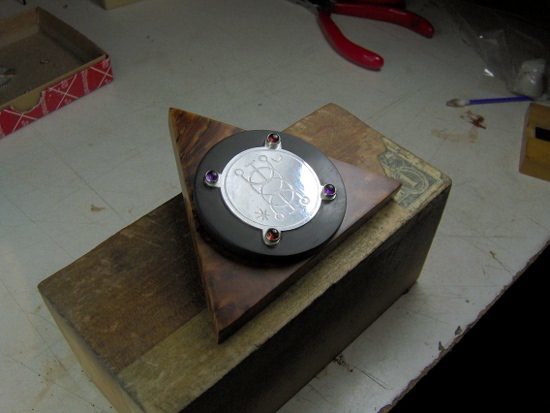Luna wn 92%v
Having a little difficulty in choosing the sequence of the various cube nets for Number 32. Which in consideration uncovers information that jumps back and prompts a revision of the original premise/conceptual elements. Was settled and comfortable with there seemingly being only ten possible nets, ten possible ways to unfold a cube. Upon further examination, there are eleven. Both are accurate, but what are the defining restrictions, the qualifiers for each? What is the difference between the world where there are ten ways and the world where there are eleven? And upon learning that, which do I then use?
Oh, how I hate to have to revisit an earlier premise to re-examine a foundational part of a piece I already thought I had a good deal figured out about! But necessity dictates…
The difference in the query is: how many ways can it unfold in actual 3-d cube-space rather than how can you slide the squares around once it is already unfolded in the 2-d. If actual unfolding, then there are eleven legitimate ways it can happen without completely severing and reattaching any square (thus moving it through another plane temporarily, “cheating” :). If rearranging an already flattened cube, only ten.
Interested in actual unfoldings rather that rearrangement. So back to the drawing board. leave the question of sequence for later.
some clues as to what this piece will touch on:
-The relationship between the six and the ten.
-What part motion and mutation play in that (the eleven)
-Paradox of stability vs. movement within the element of earth
-The path light takes through matter.
-Stacked/layered visual images that illustrate a variety of manifest form (multiplicity of the different shapes of cube nets). These images all made with negative space in the matter (“holes”)
some facts:
-The cube nets are all 3 wide by 4 long.
-There is no standard starting point- the unfolding may begin by a division of any edge, any one square may be the one that doesn’t move in any particular unfolding (there is always one that doesn’t move and five that do)
-When layered on top of one another, there is no “window’ of cube square openings straight through all of the layers. To trace a path through all of the layers, that path has to wind, to deviate somewhere.
-When finally lashed together, all of the layers will move slightly will not be in a fixed position directly over one another. Though a perfect alignment is possible, it would occur only briefly, occasionally (non-static).
-There are many, many reflected right angles and two tapering planes that become two loops (the band that wraps around the finger)
-It will resemble a tower, albeit a wiggly one.
-Am going with the all-copper construction over the alternating layers of copper and brass. Seems more right at this point.
